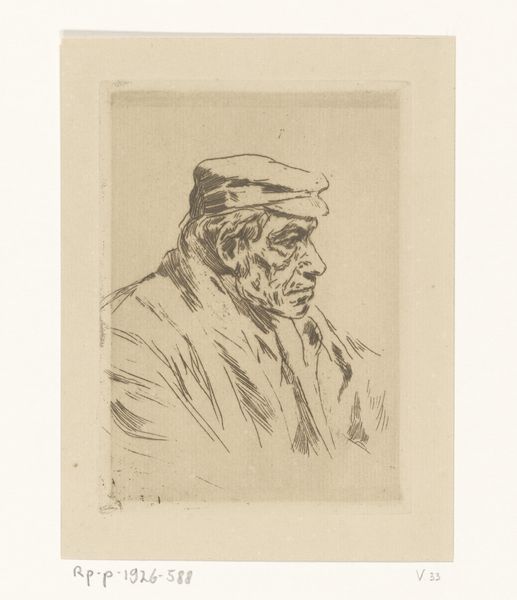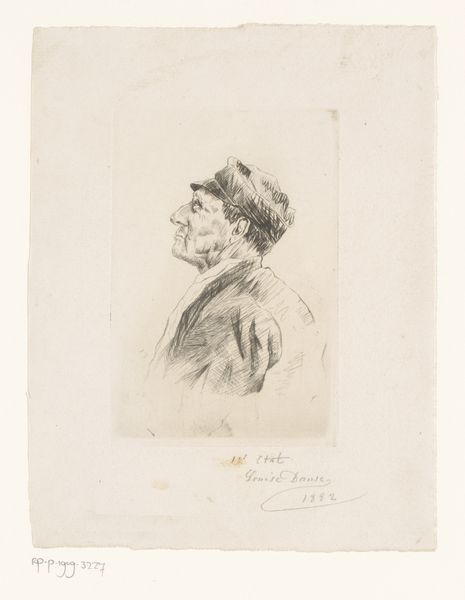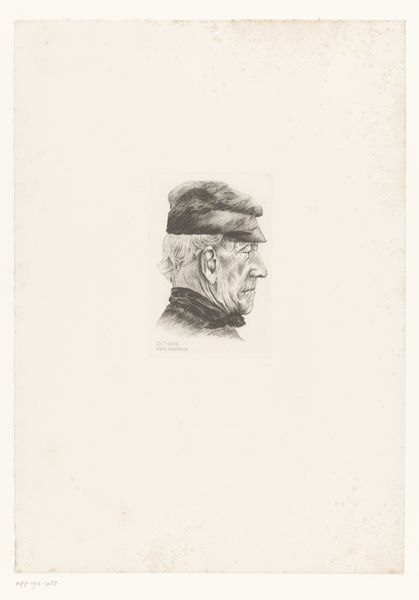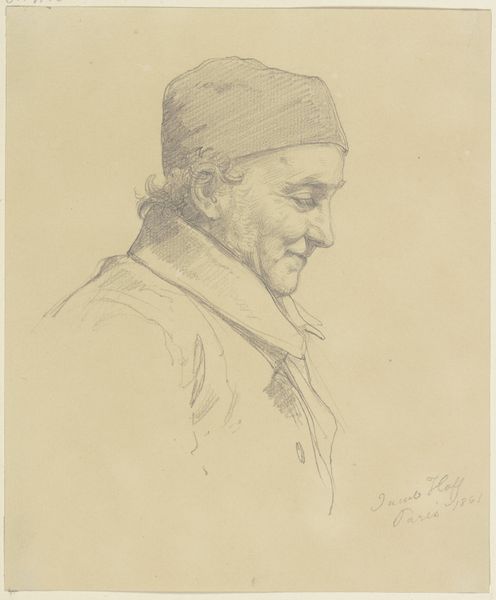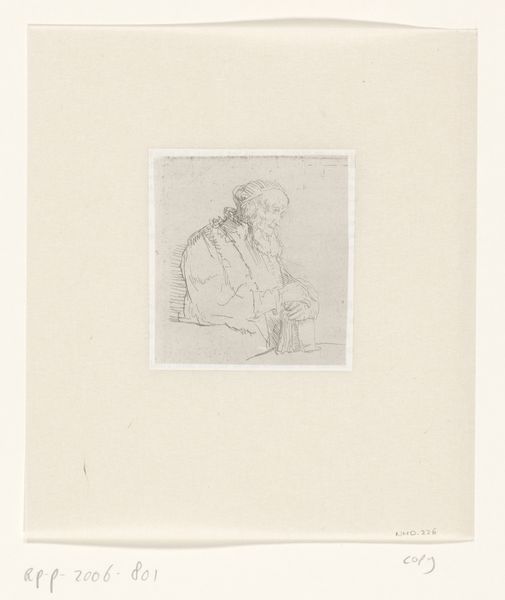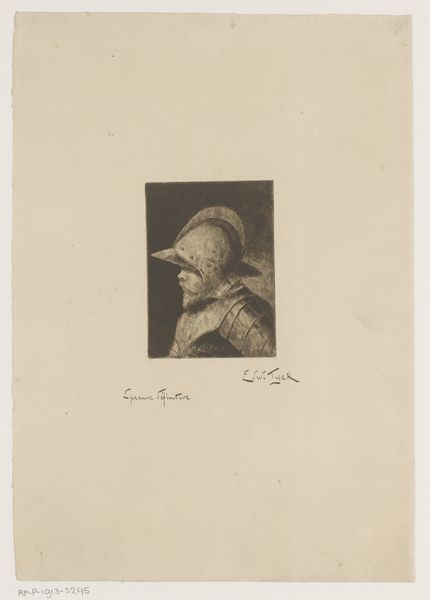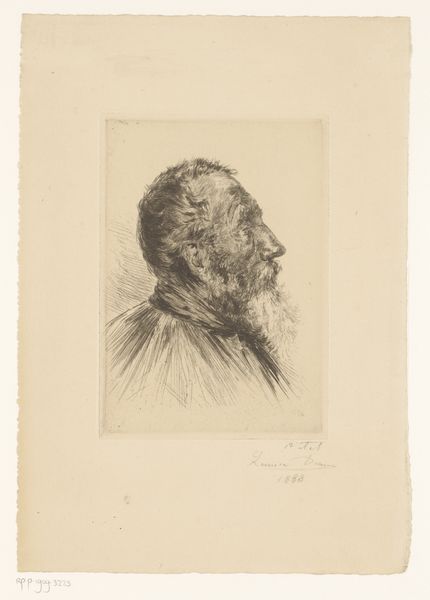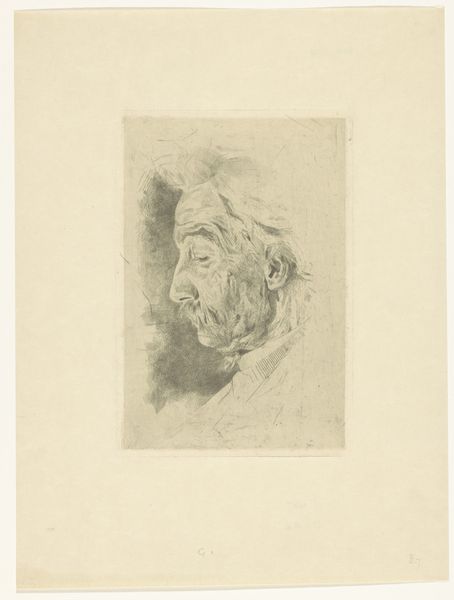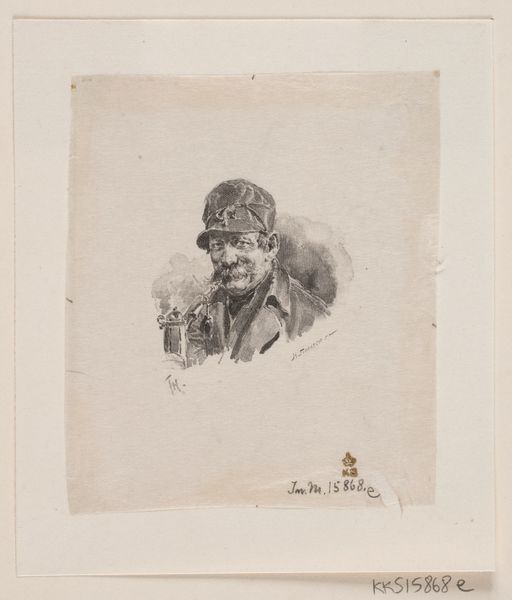
Portret van een onbekende man, mogelijk de veldwachter van Klemskerke 1877 - 1909
0:00
0:00
louisedanse
Rijksmuseum
drawing, ink
#
portrait
#
drawing
#
pencil sketch
#
ink
#
realism
Dimensions: height 158 mm, width 118 mm
Copyright: Rijks Museum: Open Domain
Curator: Louise Danse created this captivating portrait sometime between 1877 and 1909. It's intriguingly titled, "Portrait of an unknown man, possibly the field warden of Klemskerke," and is currently held at the Rijksmuseum. Editor: It feels almost like a fleeting memory captured with ink and pencil. The man's gaze is averted, and there's an air of quiet introspection in the sparse lines. I am drawn to how much texture she conveys through minimal strokes. Curator: Yes, and even the potential identity adds layers of meaning. Field wardens in that era were often figures of authority in rural communities. Is she consciously commenting on hierarchies here? Or simply recording a type? Editor: Or thinking about what "authority" even *means* at the village level! These materials are really humble. Pen and ink drawings would have been available to a much wider swathe of makers at this time and I am always struck by this accessibility. I wonder who this person *really* was – what daily labour they undertook and in what circumstances this portrait was commissioned, or made for leisure, or sketched and quickly sold. The materials whisper that he’s accessible, knowable. Curator: Absolutely, the work’s symbolic weight could shift depending on his position in society. His down-turned gaze, coupled with those aged features – deeply etched with experience – also suggest the weight of responsibility or a lifetime of perhaps undervalued labor. The way Danse captured that weight...that's quite potent. There’s definitely something profound there about the role of service and community. Editor: I keep returning to the labor in making this *artwork*. What does it mean to commemorate anonymous labour and community work this way with these *affordable* materials? There's a democratization implied in both the process of representation, as well as in her material choice. Danse, by not working in more high-end art-making avenues is democratizing the entire system. I find that quietly radical. Curator: An intriguing intersection of material constraints and the subtle elevation of everyday subjects. She gives dignity. The more I consider the work, the more it appears charged with deeper questions concerning cultural values, even moral considerations embedded in an ordinary image of an older male authority figure. Editor: And hopefully considering how we, too, can elevate, celebrate and make visible overlooked contributions around us by embracing the accessible, the modest and the power of human presence.
Comments
No comments
Be the first to comment and join the conversation on the ultimate creative platform.
